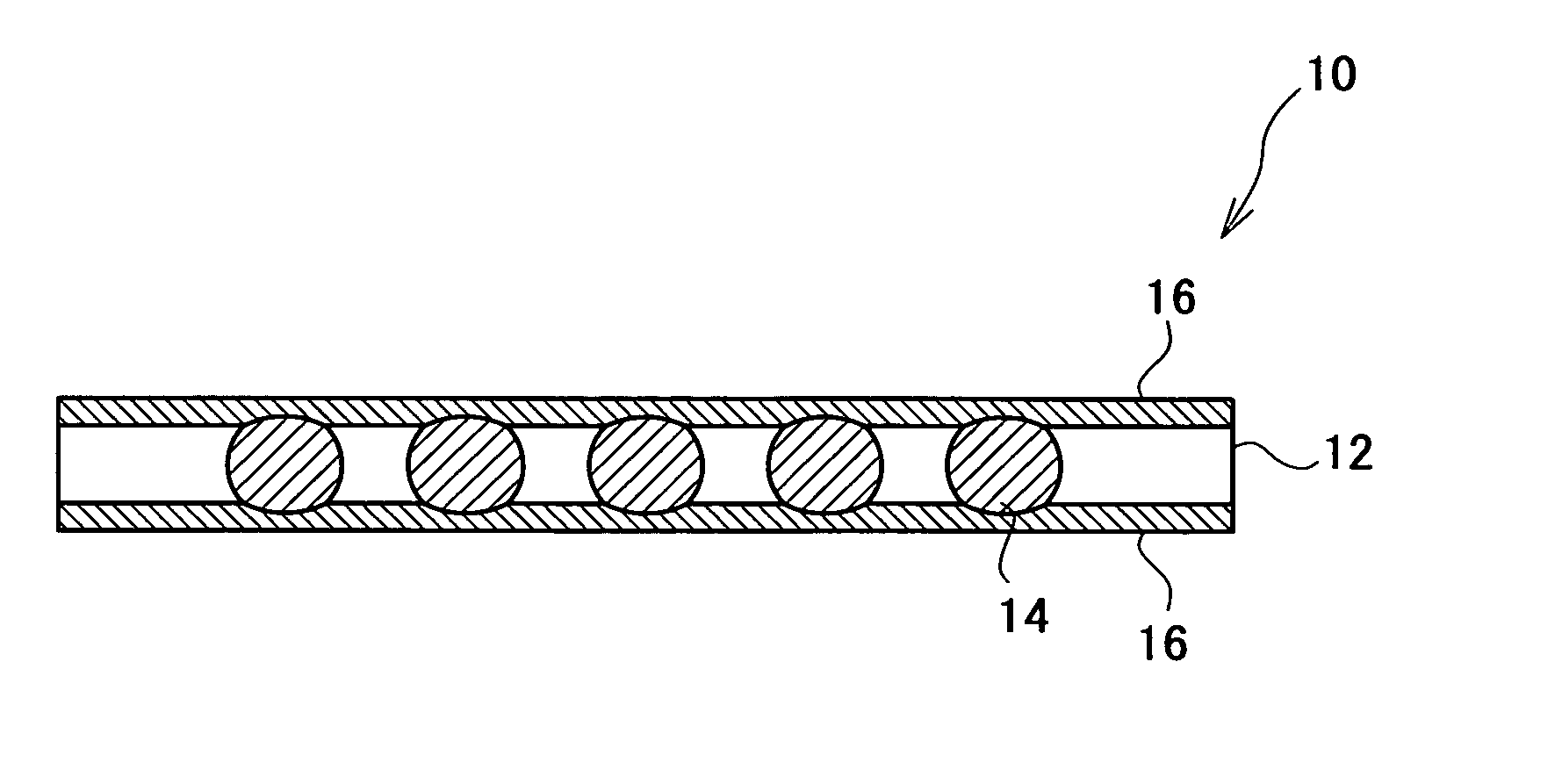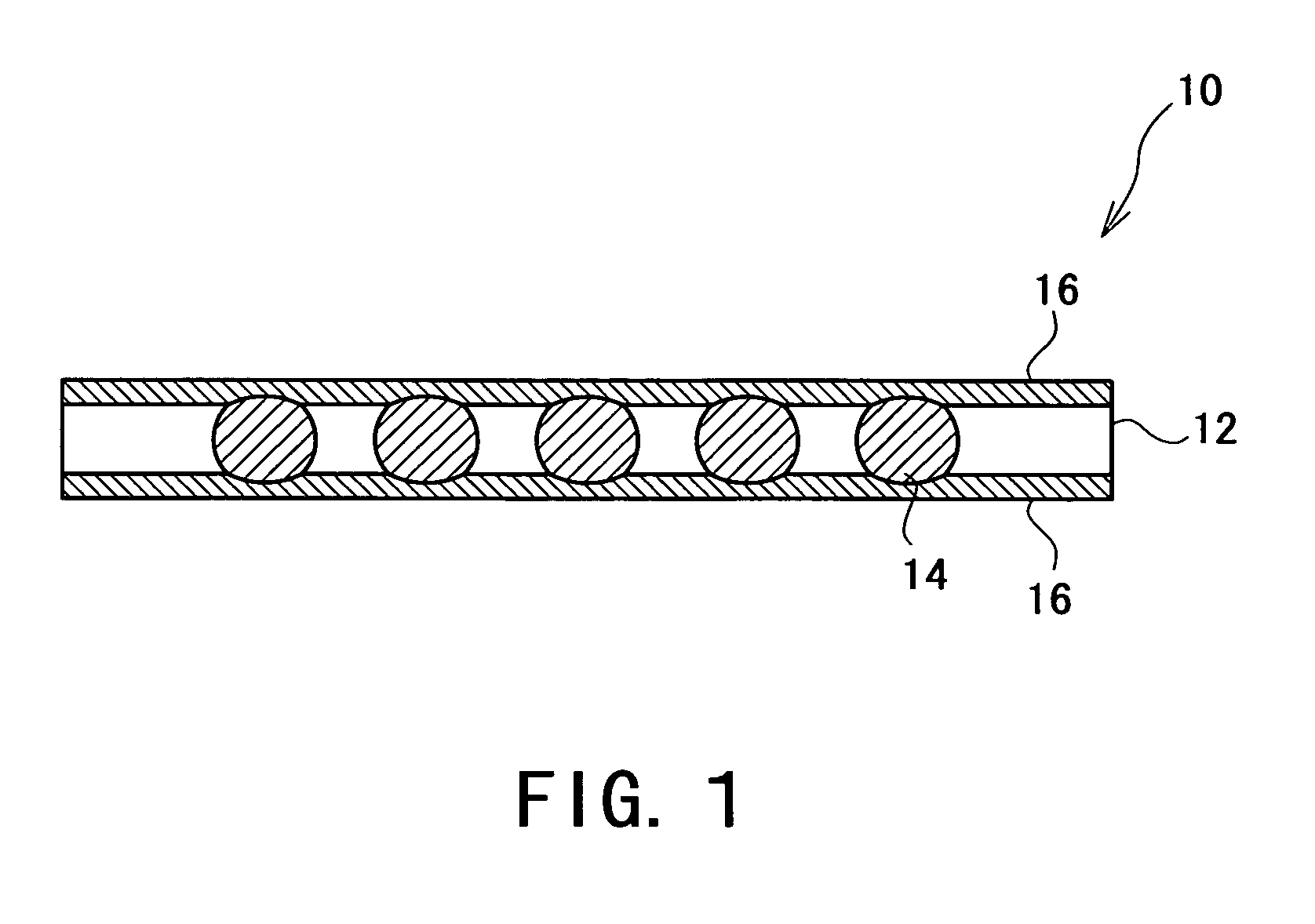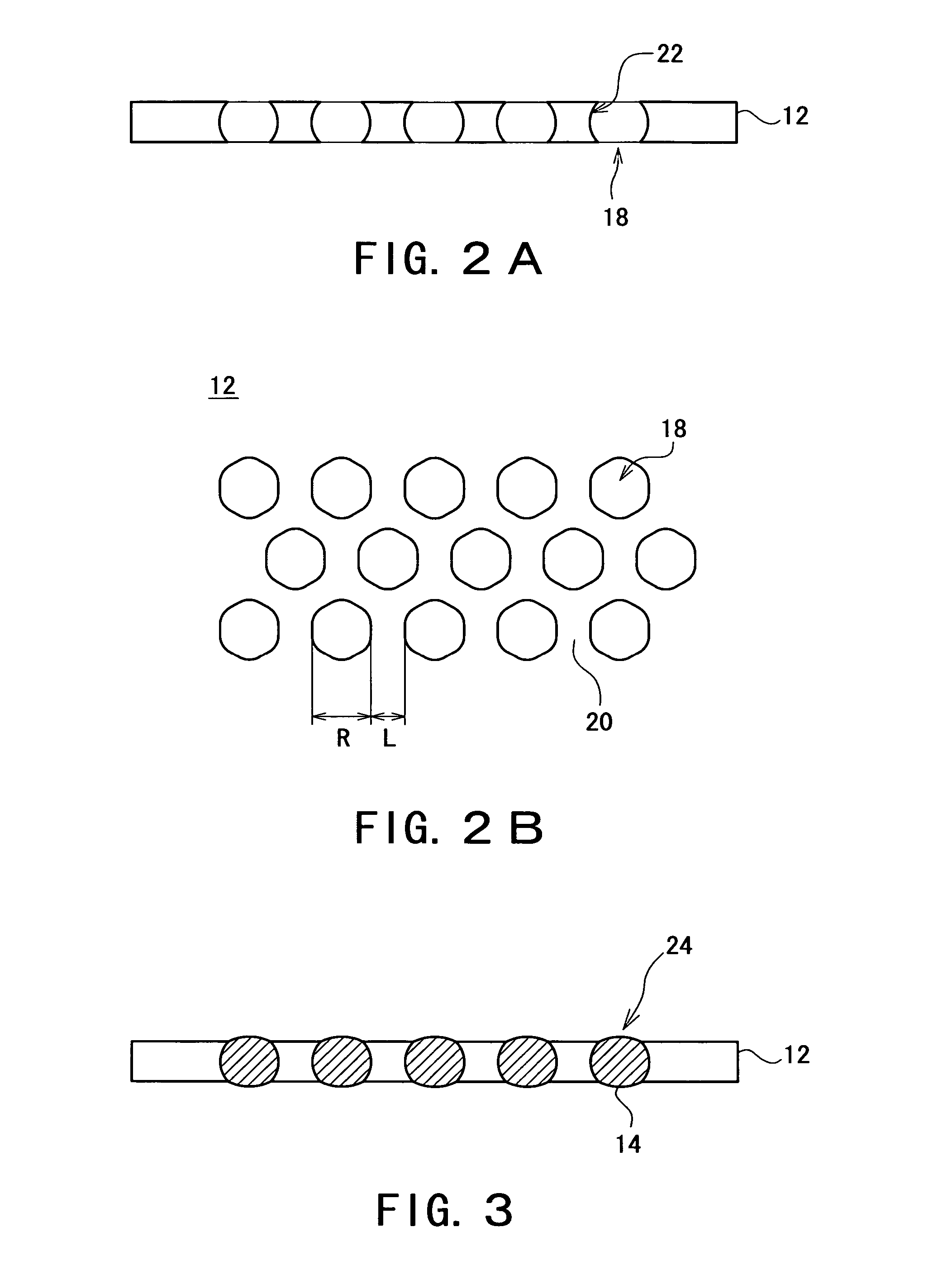Anisotropic Conductive Film and a Method of Manufacturing the Same
a technology of anisotropic conductive film and manufacturing method, which is applied in the manufacture of film/foil adhesives, cable/conductor connections, and coupling device connections, etc., can solve the problems of reducing reliability, difficult to ensure insulation in the film surface direction, and difficulty in making conductive particles smaller in diameter to be less than the variations in height, so as to achieve superior adhesion to the connection target, maintain connection reliability, and high reliability
- Summary
- Abstract
- Description
- Claims
- Application Information
AI Technical Summary
Benefits of technology
Problems solved by technology
Method used
Image
Examples
example 1
[0136] A polymer solution was prepared by adding 10 weight % of a copolymer of dodecyl acrylamide and caproic acid relative to polysulfone as an amphiphilic material to a solution containing 0.1 weight % of polysulfone (Aldrich, molecular weight Mw=56,000) in chloroform.
[0137] Next, this polymer solution was cast at a coating film thickness of 780 μm onto a Petri dish (diameter: 90 mm) over which air at a relative humidity of 50% was blown continuously to vaporize the chloroform. As a result, as shown in FIG. 6, a porous film consisting of polysulfone, having numerous holes penetrating in the film thickness direction in a honeycomb arrangement, wherein the inner wall surfaces of the holes curved outwards, was obtained. The diameter of the holes in the porous film was about 5 μm.
[0138] Next, this porous film was immersed in an Ag ethanol dispersion solvent at a concentration of 3 weight % (NIPPON PAINT Co., Ltd., “Fine Sphere SVE 102”, average particle size 50 nm), and lifted up at...
example 2
[0141] An anisotropic conductive film according to Example 2 was manufactured in an identical way to that of Example 1, except that polysulfone was dissolved in chloroform at a concentration of 0.2 weight %, and the coating film thickness was 1560 μm. FIG. 8 and FIG. 9 respectively show a porous film consisting of polysulfone and a porous film wherein the holes were filled with Ag particles, obtained when the anisotropic conductive film according to Example 2 was manufactured. The hole diameter of the porous film was about 10 μm.
example 3
[0142] An anisotropic conductive film according to Example 3 was manufactured in an identical way to that of Example 1, except that instead of polysulfone, siloxane-modified polyimide (UBE INDUSTRIES LTD., “R15”) was dissolved in chloroform at a concentration of 0.1 weight %, and the porous film was lifted up at a speed of 7 μm / sec after immersion in the Ag ethanol dispersion solvent. FIG. 10 and FIG. 11 respectively show a porous film consisting of siloxane-modified polyimide and a porous film wherein the holes were filled with Ag particles, obtained when the anisotropic conductive film according to Example 3 was manufactured. The hole diameter of the porous film was about 5 μm.
PUM
| Property | Measurement | Unit |
|---|---|---|
| size | aaaaa | aaaaa |
| thickness | aaaaa | aaaaa |
| thickness | aaaaa | aaaaa |
Abstract
Description
Claims
Application Information
 Login to View More
Login to View More - R&D
- Intellectual Property
- Life Sciences
- Materials
- Tech Scout
- Unparalleled Data Quality
- Higher Quality Content
- 60% Fewer Hallucinations
Browse by: Latest US Patents, China's latest patents, Technical Efficacy Thesaurus, Application Domain, Technology Topic, Popular Technical Reports.
© 2025 PatSnap. All rights reserved.Legal|Privacy policy|Modern Slavery Act Transparency Statement|Sitemap|About US| Contact US: help@patsnap.com



